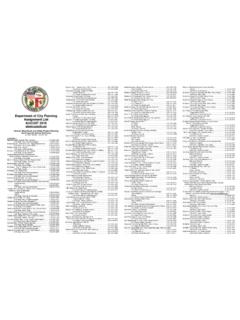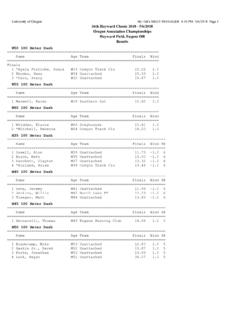Transcription of Avaya System and Network Connectivity Guidelines
1 Author: david Randell Page 1 Avaya Confidential May 2008 Version Avaya System
2 Connectivity and Cisco Network Configuration Guide May 2008 Version Author: david Randell Page 2 Avaya Confidential May 2008 Version Contents 1 2
3 Pre-Statement for QoS, Port and PoE 4 Power to IP 4 Port 4 IP Phone Local 4 MedPro, CLAN, IPSI, S87xx, G700, G450, G350, G250 Local 5 3 Summary Review of Avaya 6 Connecting Avaya Components To The 7 onnecting an IP Phone with PC Connected to Its Secondary Ethernet 8 Traditional 9 Voice VLAN & Auxiliary VLAN 9 onnecting MedPro, CLAN, S87xx/S85xx, IPSI, G700, G450, G350, 12 IPSI and S87xx 12 IPSI and ESS 15 CLAN and MedPro 16 S87xx/S85xx and IPSI LAN Switch Port 19 MedPro and CLAN LAN Switch Port 19 Avaya G700/G450/G350/G250 Connectivity & Switch Port 20 nter-switch Uplink LAN Switch Port 22 Connecting Local Cisco LAN switch to Gateway WAN 22 WAN 23 RED & 24 Traffic Shaping & 24 Frame Relay Shaping and 25 Network Performance 26 Avaya System 27 DHCP 28 4600 Series IP 28 9600 Series IP 28 VLAN 30 IP Phones per 31 IP Address 31 Power over Ethernet Calculations for LAN 32 Example 32 Example 33 Configuration Details For Cisco Switch 33 TFTP/HTTP Server 34 Central or Local TFTP/HTTP 34 Access Control Lists and/or 35 and 35 35 Link Layer Discovery Protocol
4 (LLDP).. 37 Bandwidth 38 Bearer 38 Signalling S87xx/S85xx To/From IPSI: Bandwidth & 40 File Transfer Traffic between S8xxx 41 Video 41 Video QoS For Video 42 Network Performance For Video .. 43 Restricting Video & Audio 43 Testing IP 43 4 Network Readiness & Performance etwork 44 Basic 44 Detailed onverged Network Analyser (CNA).. 45 Server Based 46 Agent Based 46 Path 46 Author: david Randell Page 3 Avaya Confidential May 2008 Version 1 Introduction This
5 Document is written specifically for Network engineers who will be responsible for providing the necessary Network support and Connectivity for a new Avaya System or an existing Avaya System that is to be migrated to IP. This document only details relevant Avaya System configuration relating to Network Connectivity and does not provide reference for more general Avaya System configuration. Key Avaya System design and Cisco switch/router configuration details are discussed here. This relates to logical Avaya System design, Network design and physical Connectivity specifically for typical central and remote location solutions. This document outlines example Network configurations. Port, QoS and general design/configuration can take many forms. As a result, the exact syntax or values chosen for any particular Network environment may vary from the configurations shown here.
6 Distinct Cisco hardware platforms using various IOS and/or CatOS revisions may implement certain features using a variety of different commands. This document attempts to incorporate most of these differences but may not include all. Please refer to the specific Cisco documentation for further information. Diagrams illustrating Avaya device Connectivity show the recommended connection methods. This document does not discuss Cisco AutoQoS. The Cisco AutoQoS feature is a mechanism allowing the automation of QoS configuration across LAN switches (not WAN routers) and can be used to configure the environment successfully for use with the Avaya System . This document details a manual approach to QoS implementation in order to provide a greater level of understanding for those wishing to deploy the necessary elements of Cisco QoS configuration.
7 Please refer to the relevant Cisco AutoQoS documentation. Author: david Randell Page 4 Avaya Confidential May 2008 Version 2 Pre-Statement for QoS.
8 Port and PoE Configuration QoS QoS markings will require agreement by all parties and used consistently throughout the Network . The customer will need to determine whether to use CoS ( ) tags in the LAN and DiffServ (DSCP) in the WAN or DSCP throughout LAN and WAN. The example below will instruct the Avaya System to mark signalling, audio and video traffic with the values shown, as configured in the Network -region form. Upon registration, IP Phones, IP Softphone and gateways will tag signalling, audio and video with these values. In order to ensure IP Phones receive values, the Avaya ip- Network -map form must also be populated with the destination VLAN IDs associated to each group of IP Phones. for signalling traffic = 3 (default 7) for audio traffic = 5 (default 6) for video traffic = 4 (default 7) DSCP for signalling traffic = 24 (default 34) DSCP for bearer (audio) traffic = 46 (default 46) DSCP for video traffic = 34 (default 34) NB: QoS parameters for and DSCP must be consistent between the Avaya System ( Network -region) and the configuration implemented across the Network .
9 Inconsistent QoS classification, marking and/or scheduling policies between Network and Avaya System may impact voice quality and/or System stability. NB: Please see section for QoS recommendations for S87xx to/from IPSI traffic. Power to IP Phones Power over Ethernet (PoE) provided by LAN switches for IP Phones must be compliant. Avaya cannot guarantee successful operation with any proprietory inline power mechanism. Correct power calculations must be made to ensure sufficient power is available for all IP Phones connected to each individual LAN switch or line module. Port Speed/Duplex Avaya recommends Cisco ports connected to CLAN, MedPro, IPSI, S8xxx, G700, G450, G350 and G250 are fixed at 100Mb/s full-duplex. Cisco LAN switch ports connecting IP Phones should be configured for auto-negotiation.
10 PCs connecting to IP Phones secondary Ethernet ports should also be auto-negotiation. To avoid duplex mismatch, fixed or auto values must be identically configured at both ends of the Ethernet link. A value of auto at one end and fixed at the other will result in duplex mismatch. IP Phone Local Connection LAN switch ports connecting IP Phones are configured as trunk ports. CoS ( ) and DSCP values can be marked by the Avaya IP Phone (see section ) or alternatively, marked by the Network . If marked by the Avaya IP Phone (recommended), the corresponding Cisco switch port will trust the incoming CoS or DSCP value ( trust dscp is recommended). Author: david Randell Page 5 Avaya Confidential May 2008 Version NB.





